What Is Industrial Outdoor Storage?
In the dynamic landscape of commercial real estate, one concept that has been gaining increasing attention and relevance is "industrial outdoor storage." IOS is fundamentally about utilizing outdoor spaces for various storage purposes within the realm of commercial properties.
Let’s breakdown the concept of industrial outdoor storage, explore the significance of industrial outdoor storage within the broader context of commercial real estate, and shed light on why it's a trending topic in the world of commercial real estate investing.
What Is Industrial Outdoor Storage?
Industrial outdoor storage refers to the use of outdoor spaces within commercial properties for the purpose of storing various materials, equipment, or assets related to business operations.
These industrial storage facilities provide practical and cost-effective solutions for businesses that require ample space to store items that don't necessarily need to be sheltered indoors (like a self-storage facility). These spaces are typically designed to accommodate a wide range of goods, from construction materials and vehicles to machinery and shipping containers.
Industrial outdoor storage areas serve as open-air repositories where companies can safely house their assets, ensuring they are easily accessible, well-organized, and secure. This concept is particularly valuable for businesses engaged in manufacturing, logistics, construction, and distribution, where the efficient management of equipment and materials is essential for smooth operations.
Here’s what you might see stored at an industrial outdoor storage facility:
Construction Materials: Including lumber, steel, concrete, pipes, and building supplies.
Vehicles: Such as trucks, trailers, buses, construction equipment, and recreational vehicles.
Machinery and Equipment: Including manufacturing equipment, agricultural machinery, and industrial machinery.
Shipping Containers: For the temporary or long-term storage of goods and inventory.
Heavy Equipment: Such as cranes, bulldozers, forklifts, and excavators.
Palletized Goods: Including products, goods, and materials stored on pallets.
Boats and Recreational Vehicles: For storage during off-season periods.
By utilizing these outdoor storage spaces, businesses can optimize their operational efficiency, reduce the need for extensive indoor storage facilities, and potentially lower overall operational costs. As such, industrial outdoor storage plays a pivotal role in enhancing the functionality and profitability of commercial businesses.
2. Types of Industrial Outdoor Storage
Not all outdoor storage facilities are created equal in the realm of industrial outdoor storage. Different businesses have different needs, so there are various types of industrial outdoor storage facilities designed to accommodate their needs. There are four main types of IOS:
Yard Storage:
Yard storage involves the utilization of open outdoor spaces, often paved or gravel-covered, to store large items or equipment. These yards are typically situated adjacent to industrial facilities, distribution centers, or manufacturing plants.
Purpose: Yard storage is ideal for businesses that need to store oversized items, machinery, or vehicles temporarily or for extended periods. It allows for easy access and maneuverability of assets, making it suitable for industries such as construction, transportation, and heavy manufacturing.
Container Storage:
Container storage entails the use of shipping containers placed outdoors for the storage of goods and materials. These containers come in standardized sizes and can be stacked for efficient use of space.
Purpose: Container storage is a versatile solution for businesses requiring secure and weather-resistant storage. It's commonly used in logistics, retail, and construction to safeguard inventory, tools, and equipment. Container yards can be easily customized to accommodate specific storage needs.
Trailer Storage:
Trailer storage involves parking and storing trucks, trailers, or other large vehicles in designated outdoor areas. These areas are equipped with the necessary infrastructure, such as hook-ups for power and utilities.
Purpose: This type of storage is crucial for trucking companies, freight carriers, and logistics operations. It provides a safe and convenient location to park and maintain fleets between journeys, reducing wear and tear on vehicles and ensuring they are ready for the road.
Open-Air Storage:
Open-air storage refers to expansive outdoor areas used to store a wide range of materials, equipment, or assets without the need for protective structures or containers.
Purpose: Open-air storage is a cost-effective solution for businesses with large quantities of items that do not require shelter from the elements. It is often employed in industries such as agriculture, lumber, and heavy machinery sales. The accessibility and affordability of open-air storage make it a practical choice for businesses looking to maximize their storage capacity.
3. Why Industrial Outdoor Storage Is Growing
In recent years, the significance of industrial outdoor storage has seen a remarkable surge within the industrial real estate sector. This growth can be attributed to several key factors that underline its crucial role, particularly in logistics, manufacturing, and distribution operations. Let's delve into why industrial outdoor storage is on the rise:
Cost-Efficiency: Industrial outdoor storage offers cost-effective alternatives to traditional indoor warehouse space. By utilizing outdoor areas, businesses can reduce leasing expenses significantly and is especially appealing for logistics and distribution companies that need expansive storage without breaking the bank.
Scalability: As businesses expand or experience seasonal fluctuations in demand, the need for scalable storage solutions becomes paramount. Industrial outdoor storage provides the flexibility to scale up or down easily, making it ideal for manufacturers and distributors dealing with variable inventory volumes.
Accessibility: Accessibility is a key driver of growth in outdoor storage. Trucking companies and logistics providers rely on outdoor storage facilities strategically located near transportation hubs for easy access to highways, reducing transit times and fuel costs.
Versatility: Industrial outdoor storage areas are versatile and adaptable. They can accommodate a wide range of materials, machinery, and equipment. Manufacturers appreciate this versatility as it allows them to efficiently manage their production materials and equipment.
Streamlined Operations: For logistics and distribution operations, having outdoor storage in close proximity to transportation facilities streamlines the supply chain. It reduces the time and effort required to load and unload goods, resulting in quicker turnarounds and improved customer satisfaction.
Seasonal Demand Handling: In industries with seasonal demand patterns, such as retail and agriculture, outdoor storage offers a practical solution. Businesses can store excess inventory, equipment, or crops during peak seasons and retrieve them as needed.
Environmental Considerations: Some businesses opt for outdoor storage as part of their sustainability initiatives. It reduces the need for constructing additional indoor warehouse space, which can have environmental and energy consumption implications.
Zoning Flexibility: In many areas, zoning regulations may be more lenient for outdoor storage compared to constructing new buildings. This flexibility encourages businesses to explore outdoor storage options.
Businesses across logistics, manufacturing, and distribution are recognizing the value of these outdoor storage solutions as they seek to optimize their operations, reduce costs, and adapt to changing market dynamics. Industrial outdoor storage is not merely a trend; it's an essential component of modern commercial real estate strategies.
4. Benefits of Industrial Outdoor Storage
Utilizing industrial outdoor storage facilities offers numerous advantages for businesses across various sectors of commercial real estate, which in turn drives demand for investors to develop or buy industrial outdoor storage facilities. Let's explore and describe four key benefits of opting for these open-air storage solutions:
Low Cost:
Cost Savings: Industrial outdoor storage provides a cost-effective alternative to constructing additional indoor warehouse space. Leasing outdoor storage areas is often more affordable, reducing overhead expenses.
Minimal Infrastructure Costs: Unlike indoor storage solutions that require climate control and extensive infrastructure, outdoor storage relies on the natural environment, resulting in lower maintenance and utility costs.
Flexible and Scalable:
Adaptability: Industrial outdoor storage facilities are highly adaptable to meet changing business needs. Businesses can easily adjust the amount of outdoor space they lease, scaling up or down as required with minimal investment.
Seasonal Demand Handling: Industries with fluctuating seasonal demand, such as retail and agriculture, benefit from the flexibility to store excess inventory during peak seasons and reduce space during slower periods.
Enhanced Efficiency:
Proximity to Operations: Placing outdoor storage areas in close proximity to manufacturing, distribution centers, or transportation hubs streamlines operations. This reduces the time and effort required to load and unload goods, enhancing overall operational efficiency.
Easy Access: Outdoor storage provides easy access to stored items, machinery, or equipment, allowing for quick retrieval and minimal downtime, improving workflow and productivity.
Secure Storage:
Safe and Secure: Industrial outdoor storage areas can be equipped with security measures such as fencing, surveillance cameras, and access control systems. This ensures that valuable assets and inventory are well-protected from theft and vandalism.
Weather Considerations: While items in outdoor storage are exposed to the elements, modern outdoor storage solutions often include weather-resistant options to protect assets from rain, wind, and sun damage.
From cost savings to enhanced operational efficiency and secure storage solutions, the advantages of industrial outdoor storage are clear. As businesses continue to seek flexible and adaptable storage options to meet their evolving needs, industrial outdoor storage remains a practical and economically viable choice for many.
5. What to Keep in Mind When Buying Industrial Outdoor Storage Facilities
For beginners looking to invest in industrial outdoor storage properties, there are critical factors that should be top of mind during the purchasing process. These considerations can make the difference between a successful investment and one fraught with challenges. Here are the essential factors to keep in mind:
1. Location:
Strategic Placement: The location of your industrial outdoor storage property is paramount. Choose a location that aligns with the needs of potential tenants or users. Proximity to manufacturing centers, transportation hubs, or major highways can enhance the property's appeal.
Local Demographics: Understand the local demographics and business landscape. Are there industries in the area that require outdoor storage? Assess the demand based on the types of businesses operating nearby.
2. Zoning Regulations:
Compliance: Thoroughly research and comply with zoning regulations in the area. Municipalities often have specific zoning codes that dictate land use. Ensure that your intended use for the property aligns with these regulations to prevent legal issues down the road. Taking these properties through a rezoning may not be feasible in many cases.
3. Accessibility:
Transportation Links: Evaluate the accessibility of the property. Consider how easily trucks, vehicles, and employees can access the site. Properties with convenient access to major roads, highways, and logistical routes are more desirable.
Transportation Costs: Consider transportation costs for potential tenants or users. Being located near transportation infrastructure can help businesses save on logistics expenses.
4. Infrastructure:
Condition of the Property: Assess the current condition of the outdoor storage property. Look at factors such as topography, soil composition, drainage systems, and the need for any infrastructure improvements. Ensure that the property is suitable for your intended use, which will often be traversed by heavy equipment and trucks.
Security: Invest in security measures to protect the property and assets stored on-site. Adequate fencing, surveillance cameras, lighting, and access control systems may be necessary to attract tenants concerned about security.
5. Market Demand:
Market Research: Conduct thorough market research to gauge the demand for outdoor storage in the area. Analyze the needs of local businesses and industries. Understanding the market dynamics and potential demand drivers is vital to having any successful commercial real estate investment.
Competitive Analysis: Explore the competitive landscape. Identify existing outdoor storage providers in the region and understand their offerings, pricing, and occupancy rates. Determine how your property can stand out in the market. As I like to say - find your blue ocean.
Remember that due diligence, a clear understanding of zoning regulations, and a focus on the needs of potential tenants or users are key to maximizing the property's value and profitability.
6. Risks and Challenges of Industrial Outdoor Storage
While investing in industrial outdoor storage can be a money-making venture, it's essential to be aware of the potential risks and challenges that may arise in this sector. Here, are some common pitfalls and how you can work to mitigate these risks effectively:
1. Security Concerns:
Risk: Outdoor storage properties are susceptible to theft, vandalism, and unauthorized access. Valuable assets stored in these areas can be at risk without proper security measures.
Mitigation: Invest in robust security systems, including perimeter fencing, surveillance cameras, well-lit areas, and access control systems. Regular security audits and patrols can deter potential threats.
2. Environmental Factors:
Risk: Outdoor storage exposes assets to the elements, increasing the risk of damage due to weather conditions such as rain, extreme temperatures, and storms.
Mitigation: Implement weather-resistant storage solutions when possible. Consider covered storage or protective measures for sensitive assets. Regular maintenance and inspections can identify potential issues early.
3. Compliance and Zoning Regulations:
Risk: Failure to comply with local zoning regulations or land use restrictions can result in costly legal disputes, fines, or forced property modifications.
Mitigation: Thoroughly research and understand local zoning codes and regulations. Consult with legal experts or zoning professionals to ensure compliance before purchasing or leasing a property.
4. Market Volatility:
Risk: Market demand for outdoor storage can fluctuate with economic conditions and industry-specific factors. Vacancy rates may vary, impacting rental income.
Mitigation: Diversify your tenant base across different industries to reduce reliance on a single sector. Monitor market trends and be prepared to adjust pricing or marketing strategies accordingly.
5. Infrastructure and Maintenance:
Risk: The maintenance of outdoor storage properties can be challenging, particularly if surfaces degrade or security features deteriorate over time.
Mitigation: Develop a proactive maintenance plan that includes regular inspections, repairs, and surface maintenance. Budget for ongoing upkeep to ensure the property remains attractive to tenants.
6. Liability Issues:
Risk: Accidents or injuries that occur on the property may lead to liability claims or legal disputes.
Mitigation: Obtain comprehensive liability insurance coverage to protect against potential lawsuits. Implement safety protocols and signage to minimize the risk of accidents.
7. Economic Downturns:
Risk: During economic recessions or downturns, businesses may reduce their storage needs, leading to increased vacancy rates.
Mitigation: Maintain a financial cushion to weather economic uncertainties. Consider offering flexible lease terms to attract tenants during challenging economic times.
8. Infrastructure Costs:
Risk: The cost of necessary infrastructure improvements or security measures can be higher than initially anticipated, impacting the property's profitability.
Mitigation: Conduct a thorough due diligence process before purchasing a property to assess potential infrastructure and security costs. Factor these expenses into your budget and business plan.
Diligent research, proactive security measures, compliance with regulations, and proper maintenance are key to successfully managing and profiting from outdoor storage investments while minimizing potential challenges.
Examples of Industrial Outdoor Storage Facilities
Example of outdoor container storage lot with differently sized containers, drop down materials, and indoor storage opportunities.
Example of a covered outdoor storage opportunity. You can see how simple the design of these structures are and how moveable they could be.
Example of a vehicle storage lot. These lots can hold tractor trailers, campers, and RVs.

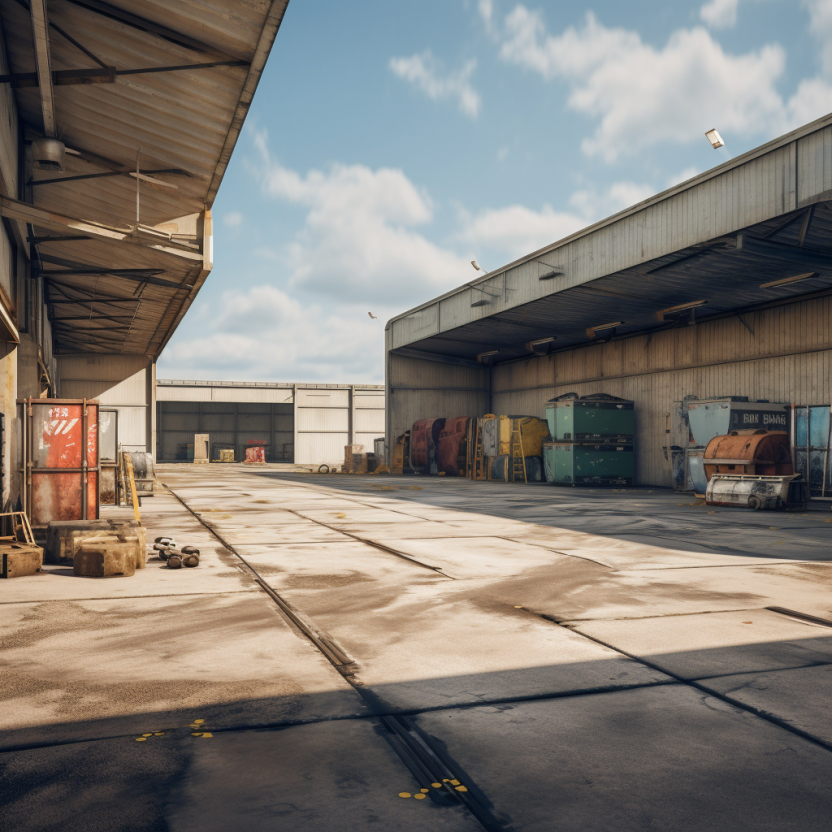
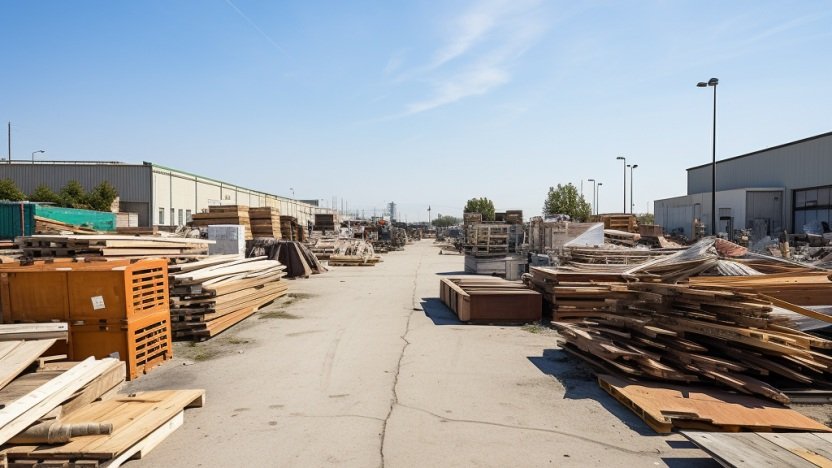

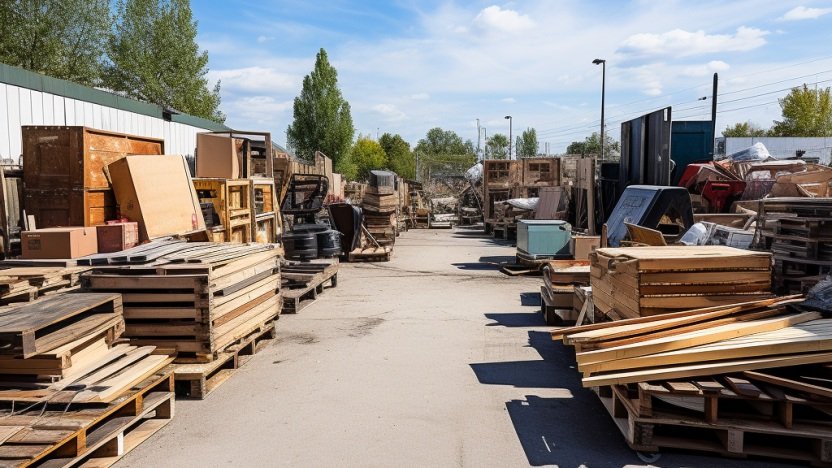

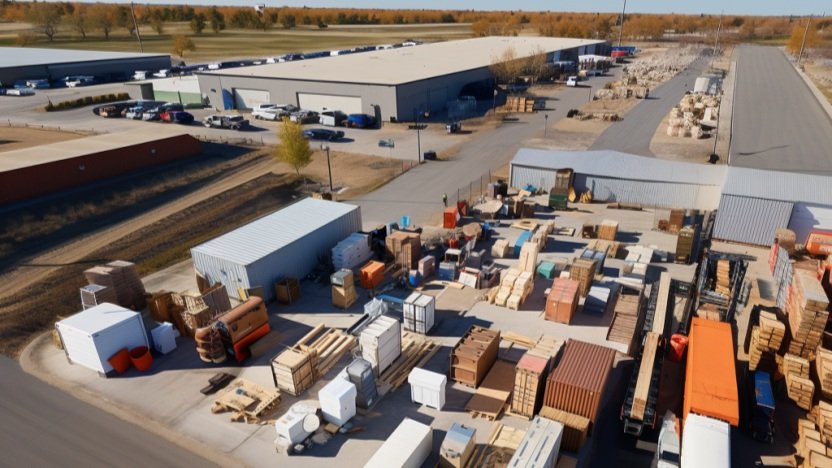
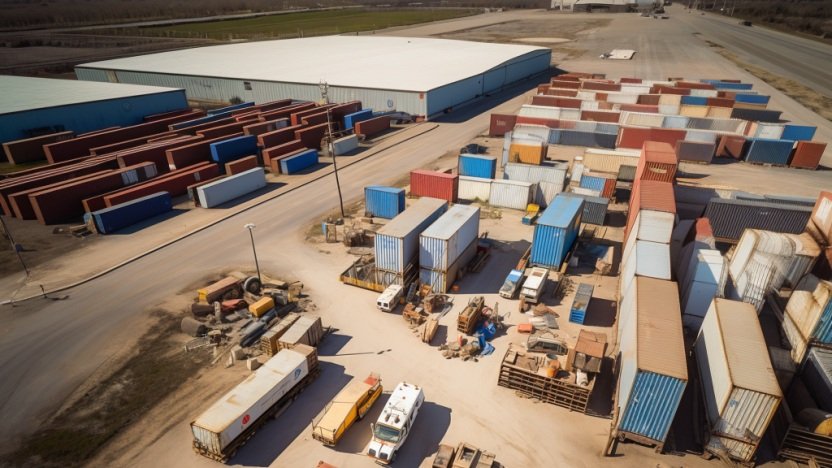





Zoning is one of the most overlooked—but absolutely critical—factors in commercial real estate investing. Before you ever run your cap rate calculations or start negotiating terms, zoning determines what you can and cannot do with a property. It shapes everything from who you can lease to, to what kind of tenants you can attract, to whether your business plan even works at all.
A flex space that’s zoned industrial may allow you to lease to a logistics operator or a manufacturing tenant—but that same building in a commercial zone could restrict your options to retail or office users. And if you buy a building that’s out of compliance with current zoning regulations? You could be facing expensive legal battles, permit issues, or a complete stall in your investment timeline.
In this blog, we’ll break down the zoning essentials every CRE investor should understand before buying a property. From use categories and zoning overlays to variances and value-add plays, this guide will help you ask the right questions and avoid costly mistakes. Whether you're buying your first small warehouse or adding to a portfolio of mixed-use developments, zoning can either be your greatest advantage—or your biggest risk.